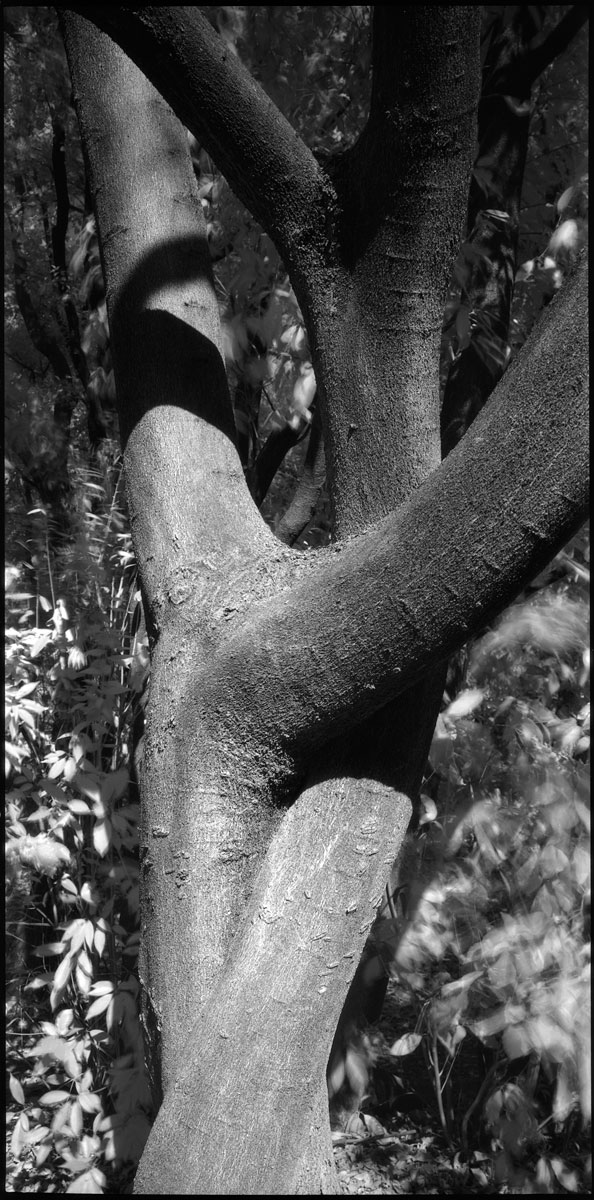Tag Archives: Sakai
Sakura, Sakura
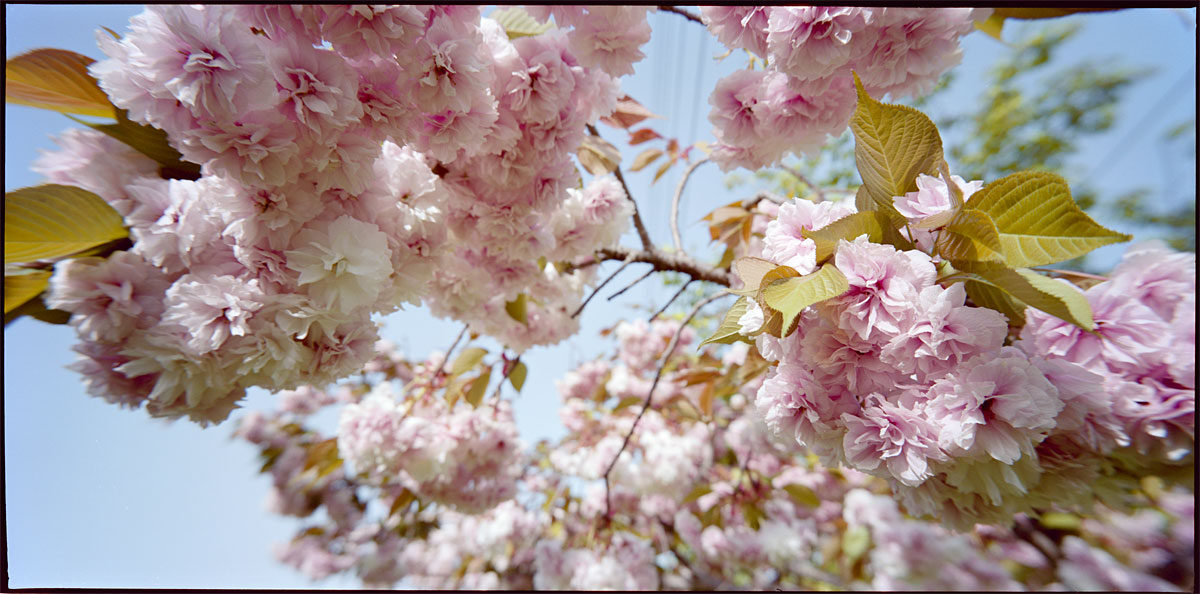 It is cherry blossom season in Japan. These flowers are in Daisen Park in Sakai. This park is also known for its necropolis. Click on the image for a larger view.
It is cherry blossom season in Japan. These flowers are in Daisen Park in Sakai. This park is also known for its necropolis. Click on the image for a larger view.
Hanami—Cherry Blossom Viewing
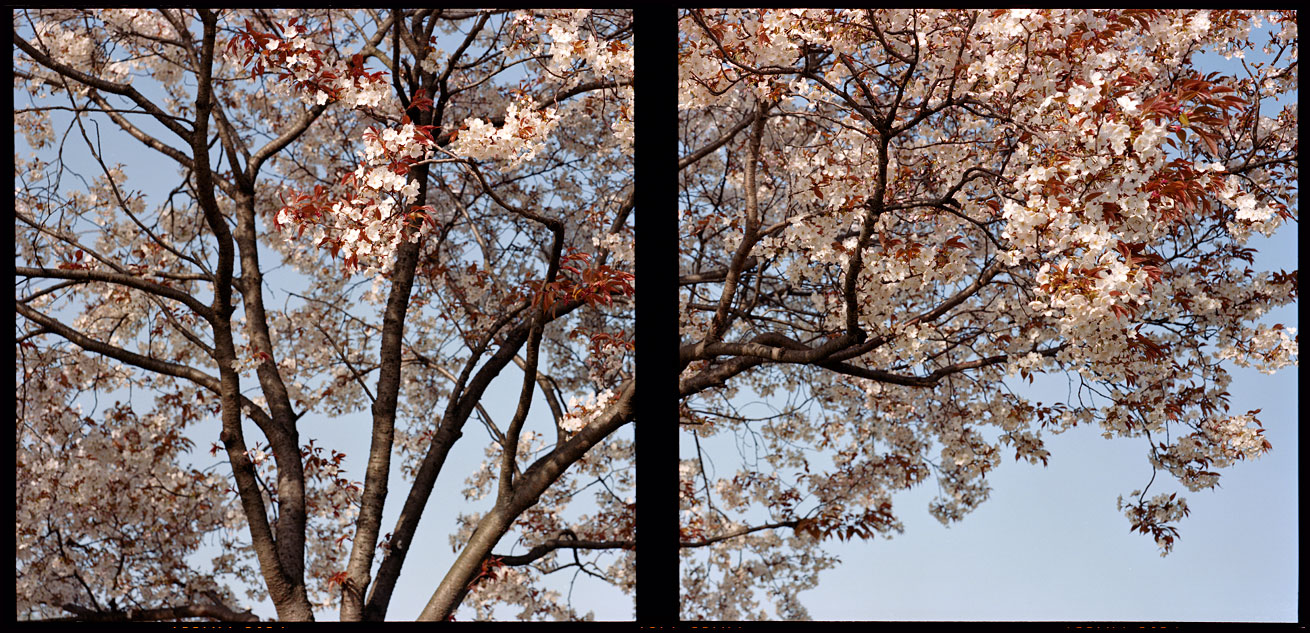 Every spring the Japanese celebrate the blossoming of their cherry trees. People flock to parks, gardens, temples, and shrines. They spread blankets and tarpaulins under the flowering branches and eat and drink and sing. Special tours go to places known for their expansive cherry tree orchards or for extremely old or grand specimens. What a wonderful thing to celebrate. Click on the image for a larger view.
Every spring the Japanese celebrate the blossoming of their cherry trees. People flock to parks, gardens, temples, and shrines. They spread blankets and tarpaulins under the flowering branches and eat and drink and sing. Special tours go to places known for their expansive cherry tree orchards or for extremely old or grand specimens. What a wonderful thing to celebrate. Click on the image for a larger view.
Maruhoyama Kofun and the Mozu Necropolis
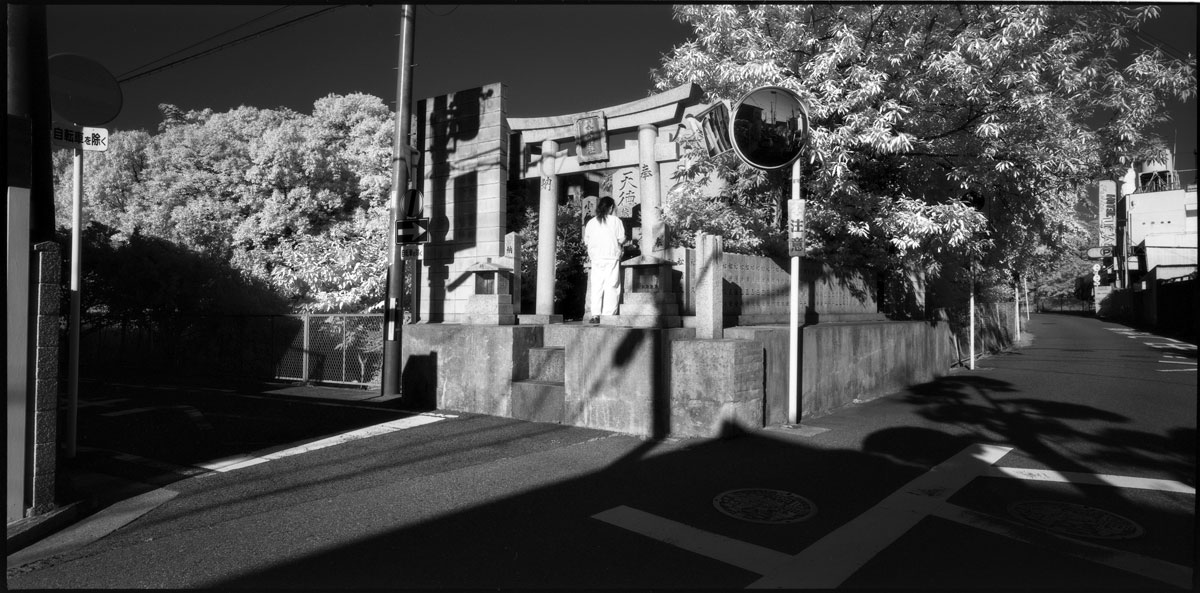 Hachijou shrine in front of Maruhoyama Kofun. Maruhoyama Kofun is also thought to be a satellite mound to Daisen Kofun. There is very little known about these sites nor the people that built them. Click on an image for a larger view.
Hachijou shrine in front of Maruhoyama Kofun. Maruhoyama Kofun is also thought to be a satellite mound to Daisen Kofun. There is very little known about these sites nor the people that built them. Click on an image for a larger view.
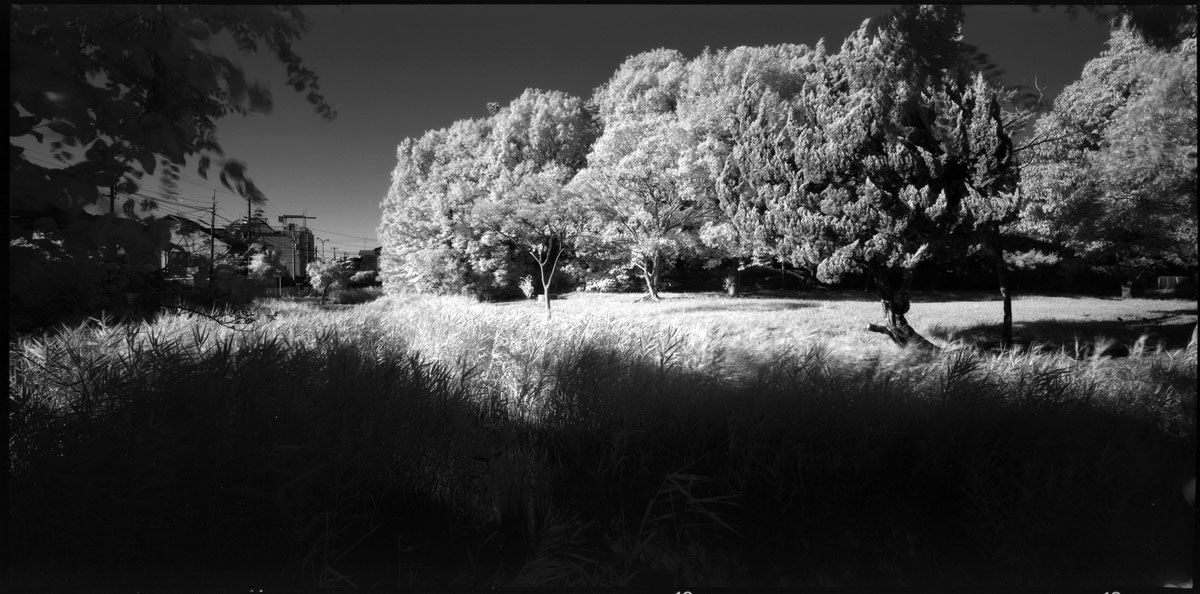
Nagayama Kofun and the Mozu Necropolis
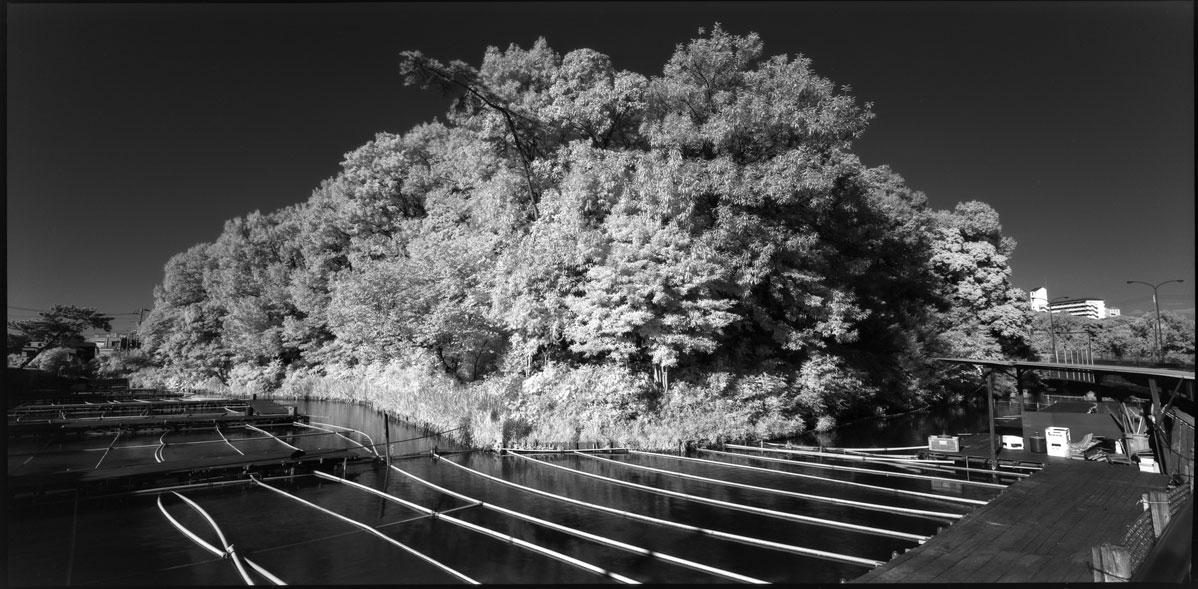
Nagayama Kofun is considered one of the satellite mounds of Daisen Kofun. Whether this was an individual grave site or a site for servants or retainers is unknown. The moat of Nagayama Kofun at one time had a rather mundane function—for 95 years, it was a popular fish farm were local sport fishermen came to relax. The farm was closed in 2011 after a long, and somewhat odd, legal battle with the city of Sakai. Click on the image for a larger view.
Chinaoka Kofun and the Mozu Necropolis
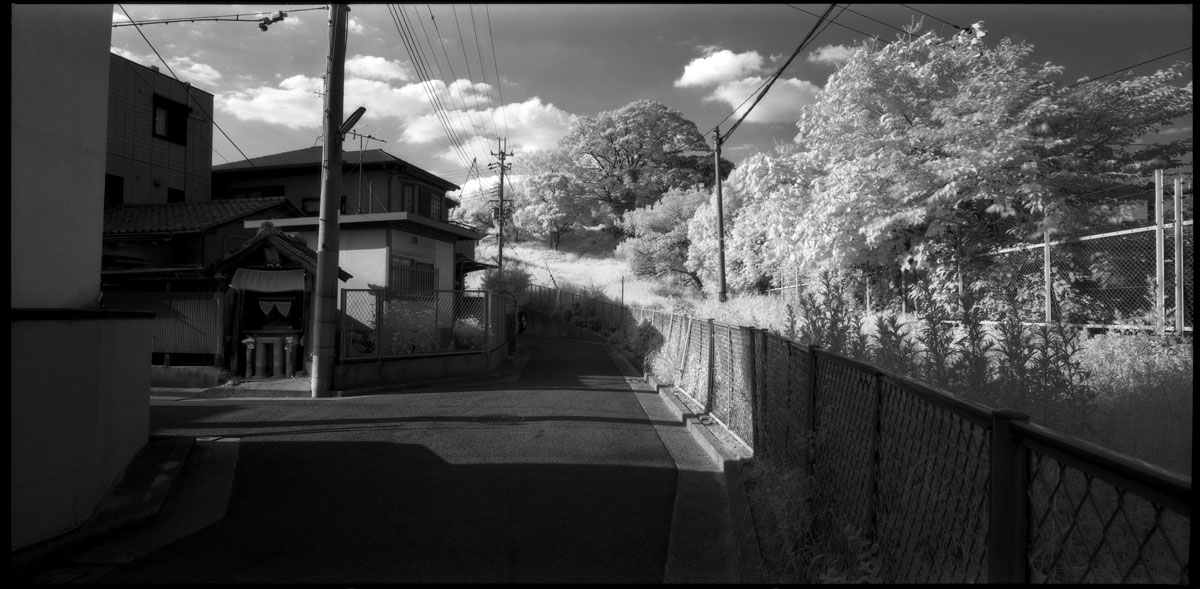 Chinaoka Kofun is the oldest of the Mozu Necropolis. While there are many spectacular Kofun in Sakai, of the known 107 historical sites, sixty one have been destroyed and many of the remaining forty six damaged. Only the tip and sliver of the main mound remains of Chinaoka Kofun, the rest destroyed by the encroaching neighborhood. A small shrine has been built next to the Kofun, which can be seen to the left of the electric pole in the image. Click on the image for a larger view.
Chinaoka Kofun is the oldest of the Mozu Necropolis. While there are many spectacular Kofun in Sakai, of the known 107 historical sites, sixty one have been destroyed and many of the remaining forty six damaged. Only the tip and sliver of the main mound remains of Chinaoka Kofun, the rest destroyed by the encroaching neighborhood. A small shrine has been built next to the Kofun, which can be seen to the left of the electric pole in the image. Click on the image for a larger view.
Jounoyama Kofun and the Mozu Necropolis
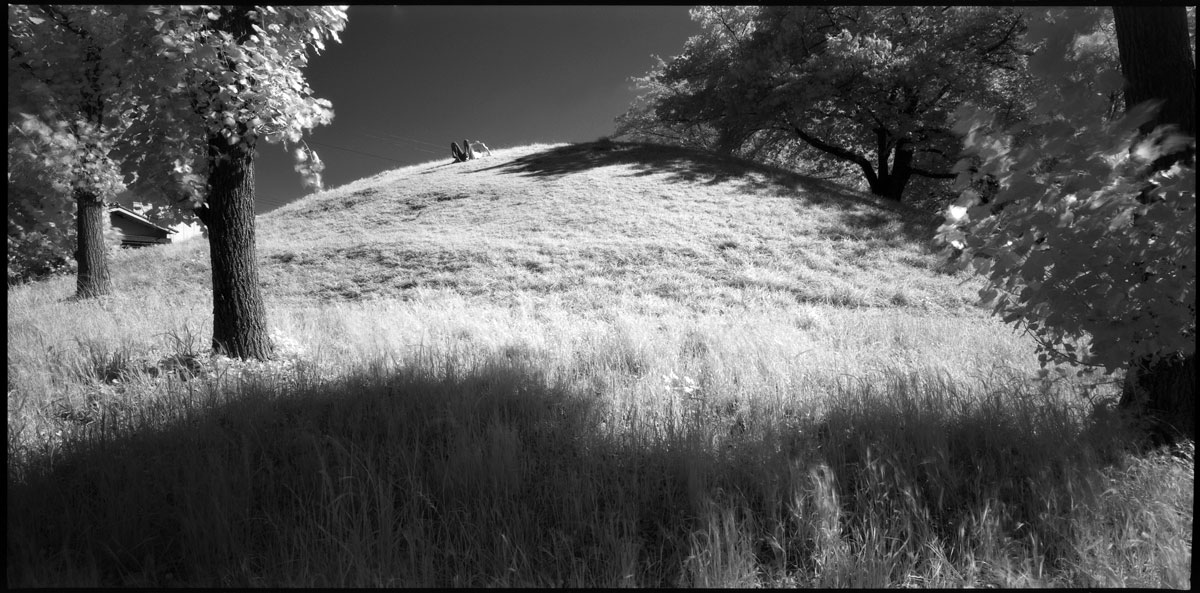
The Japanese had been building Kofun in this area for hundreds of years. The early graves were small mounds. Jounoyama Kofun, like many of the smaller mounds, is now a small neighborhood park. What treasures these burial sites may have contained are long since lost. Click on the image for a larger view.
Itasuke Kofun and the Mozu Necropolis
Today, the large Kofun are off limits to people, but they were, at one time, open. In 16th century Japan, Daisen Kofun would be visited for hanami, or cherry blossom viewing. Itasuke Kofun had a concrete bridge built to it made for a housing development; its remains are still visible. Opposition to the project prevented it.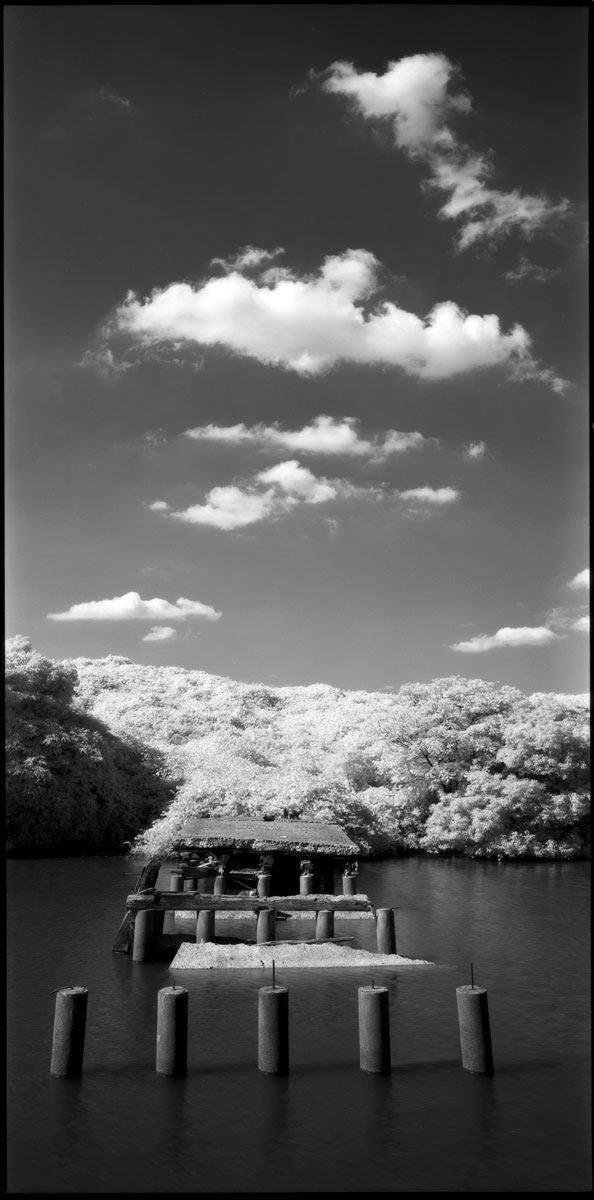 Sakai, like many cities in Japan, is a dense urban area. The Kofun act like wildlife sanctuaries. In winter, huge murders of crow can be seen gathering over these islands in the evening, and, in the summers, cicada electrify the air with their song. The moats are populated with fish and a host of water birds—heron, egrets, ducks, and divers.
Sakai, like many cities in Japan, is a dense urban area. The Kofun act like wildlife sanctuaries. In winter, huge murders of crow can be seen gathering over these islands in the evening, and, in the summers, cicada electrify the air with their song. The moats are populated with fish and a host of water birds—heron, egrets, ducks, and divers.
Itasuke Kofun has a population of tanuki, Japanese raccoon dogs. Locals come to the bridge and use sling shots to fire uncooked hotdogs to the animals. The tanuki are quite use to the game. If the trajectory of the sausage is way off, they sit calmly on the bridge and watch it disappear into the moat. Only when the shot is well aimed will the animals make the effort to catch the flying food. In the image, three tanuki are visible on the bridge trying to ascertain if this photographer is bringing lunch.
Futon Daiko—The Picture Story
How do you separate luck and talent? Talent can get you good images, competent images. But those magic moments, where do they come from? Personally, I feel those pictures are given, rather than taken.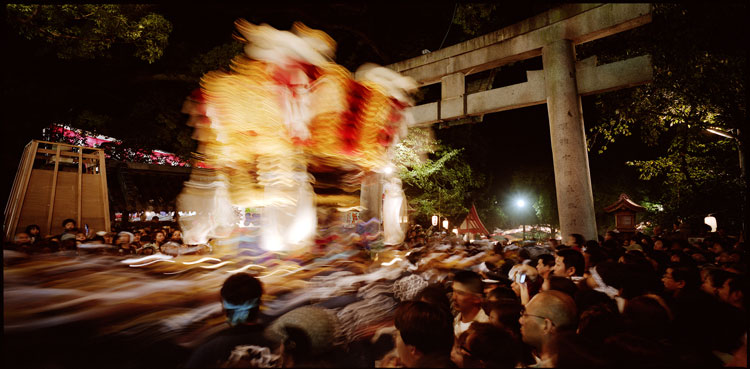 This image from Futon Daiko: A Japanese Festival is a result of many chance factors. The crowd was huge and pushed me back against a stone lantern; the force of the crowd split the lens hood on another camera in my bag. Needing some kind of support to make a long exposure—a tripod was not going to work—I clamped my camera on a steel I-beam supporting a branch of an 800-year-old camphor tree at arms length above my head. So far, so good. Just one problem. How do I frame the picture? I could not see through the viewfinder.
This image from Futon Daiko: A Japanese Festival is a result of many chance factors. The crowd was huge and pushed me back against a stone lantern; the force of the crowd split the lens hood on another camera in my bag. Needing some kind of support to make a long exposure—a tripod was not going to work—I clamped my camera on a steel I-beam supporting a branch of an 800-year-old camphor tree at arms length above my head. So far, so good. Just one problem. How do I frame the picture? I could not see through the viewfinder.
For those without a photography background, there is a technique or style known as shooting full frame. The photographer frames the image in the camera and does not recompose or crop later. I have used this style for my entire career—an unnerving way to work as there are no fixes later. So guessing the camera position, guessing the focus, guessing the exposure, here is the result, just as the camera saw it.
How much of this image is mine? How much luck? How much the good graces of the god Hachiman? I doubt the question can ever be answered. But I feel blessed to be there to take the picture, or maybe to receive it.

